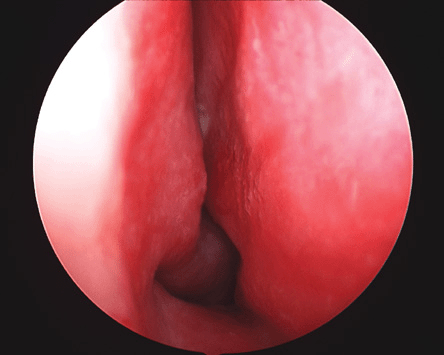Chapter 29. Septoplasty and Turbinate Reduction
Douglas M. Sidle, MD, FACS
INDICATIONS
The indications for septoplasty and turbinate reduction include situations where a patient complains of chronic nasal obstruction that is anatomical in nature and is refractory to medical therapy. Furthermore, turbinate reduction can be an effective means of reducing congestion and rhinorrhea.
PREOPERATIVE PREPARATION
A thorough history of the patient’s nasal complaints should be obtained. A history or prior nasal surgery or trauma will tip the surgeon off to potential pitfalls. A history of sinusitis or allergies can complicate what would otherwise be a successful septoplasty and turbinate reduction. Cocaine and over-the-counter nasal decongestant abuse should be discontinued long before undertaking surgery. Nasal steroid spray use is safe in the perioperative period, but should be discontinued for 2 weeks preoperatively. Preoperative examination should confirm a deviation of either the quadrangular cartilage and/or the perpendicular plate of the ethmoid bone and vomer. Special attention should be paid to examination of the internal nasal valve whose primary contributors are the nasal septum, the caudal end of the upper lateral cartilages, the soft tissue of the pyriform aperture, and the head of the inferior turbinate.
ANESTHESIA
Most septoplasties are performed under general anesthesia to achieve both anesthesia and airway protection. However, septoplasty can be performed under conscious sedation or local anesthesia, even when performed with concomitant rhinoplasty. Regardless of the level of sedation chosen, the injection of 1% lidocaine with 1:100,000 epinephrine into the submucoperichondrial plane of the nasal septum helps reduce bleeding. Local anesthetic is also injected into the stroma of the inferior turbinates at the time of turbinate reduction. Additionally, cotton pledgets soaked with 4 mL of 4% cocaine can be placed into the nose preoperatively to provide further astringency and anesthesia. When there is concern for a patient’s cardiac status, Neo-Synephrine (phenylephrine HCl) or oxymetazoline can be used on cotton pledges instead of cocaine. While allowing time for vasoconstrictive effects, the surgeon should reevaluate the septum and plan where the incision will be made based on each patient’s anatomy (Fig. 29-1).

Figure 29-1 Anterior rhinoscopy view of the right nasal airway. The deviated nasal septum is impinging on the right inferior turbinate.
POSITION AND MARKINGS
The patient is placed in a supine position and prepped and draped in the standard sterile fashion for head and neck surgery. The patient’s head may be placed on a doughnut for support and stability. The head of the bed may be raised slightly to aid in hemostasis. If the septoplasty is to be performed by an open approach, either with or without concomitant rhinoplasty, a midcolumellar incision is marked out prior to injection of local anesthetic. Generally, no marking is necessary when performing endonasal septoplasty, turbinate reduction, or rhinoplasty.
DETAILS OF PROCEDURE
A headlight is worn for both injection of local anesthesia and for the procedure itself. Following injection of local vasoconstrictive/anesthetic agent, incision is typically made in one of 3 ways: in the columellar skin for an open approach, in the membranous columella for a hemitransfixion incision, and on the septum itself for a Killian incision (Fig. 29-2). When a caudal deviation of the nasal septum is present, it may be necessary to approach the septum either through an open rhinoplasty approach or using a hemitransfixion incision. The hemitransfixion incision is placed on one side only of the membranous columella at the caudal border of the nasal septum. Retracting the columella aids in creation of the hemitransfixion incision and in dissection (Fig. 29-3
Stay updated, free articles. Join our Telegram channel

Full access? Get Clinical Tree








